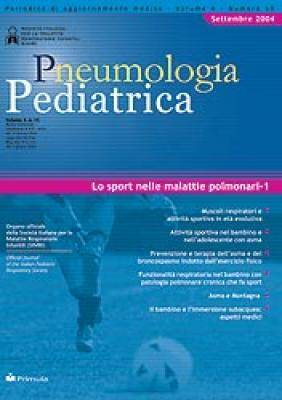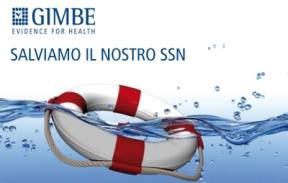Archivio > Vai alle uscite del 2004 > Vai aVolume 4, Numero 15 - Settembre 2004
- Lo sport nelle malattie polmonari-1
Funzionalità respiratoria nel bambino con patologia polmonare cronica che fa sport Pulmonary function testing and sports in children with chronic respiratory disease

Riassunto. L’asma bronchiale rappresenta la patologia respiratoria cronica più frequente in età pediatrica e l’asma da sforzo (EIA) costituisce un fenomeno particolarmente importante nei bambini e negli adolescenti. A causa di tale problema, molti bambini si allontanano dalle attività ludico-sportive con conseguenze dannose sul loro benessere fisico e sociale. Con adeguato trattamento ed educazione, non esistono però reali controindicazioni alla partecipazione dei bambini asmatici alla maggior parte delle attività sportive. I bambini asmatici che prendono parte ad attività sportive agonistiche dovrebbero eseguire una spirometria ed un test da sforzo. Per evidenziare l’EIA, un test da sforzo su treadmill è più indicato rispetto ad uno su cicloergometro. Prima e dopo lo sforzo vengono eseguite varie rilevazioni del FEV1. Una riduzione del FEV1 310% rispetto al valore basale è considerata patologica, ma per alcuni autori solo una riduzione 315% permette di fare diagnosi di EIA. Un test da sforzo cardiopolmonare con misurazione di consumo di O2, produzione di CO2 e ventilazione andrebbe riservato a pazienti con patologie polmonari croniche che possono associarsi ad alterato scambio di gas a livello polmonare e limitare la tolleranza allo sforzo fisico.
Summary. Exercise-induced asthma (EIA) is a prominent finding in asthmatic children because of their greater participation in vigorous activities. Because of EIA, asthmatic children may avoid physical activity with damaging consequences to their physical and social well-being. However, current evidence supports the participation of asthmatic children and adolescents in most athletic activities. Regular exercise and level of physical conditioning are major determinants of exercise tolerance in children with controlled asthma and children should not be excluded from physical activity without a compelling medical controindication.Asthmatic children who want to engage in competitive sports should undergo a spirometry and an exercise test. Before and after the exercise test, FEV1 is repeatedly measured. A FEV1 fall of 10% from the pre-exercise value is considered abnormal, whereas some investigators require a 15% drop for a diagnosis of EIA. Cardio-pulmonary exercise test with measurement of O2 consumption, CO2 output and ventilation should be reserved for patients with chronic pulmonary disease that could affect pulmonary gas exchange and limit exercise tolerance.






